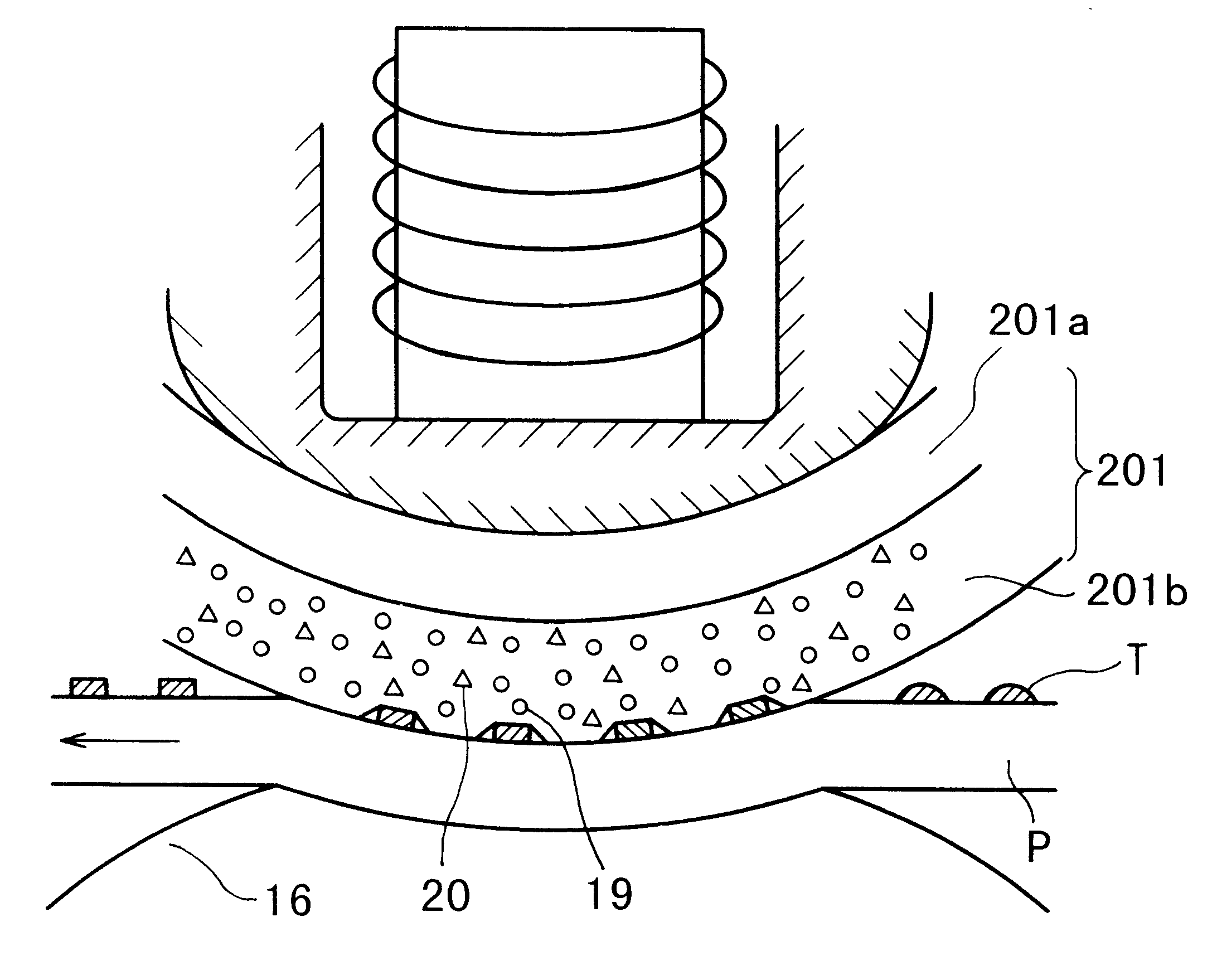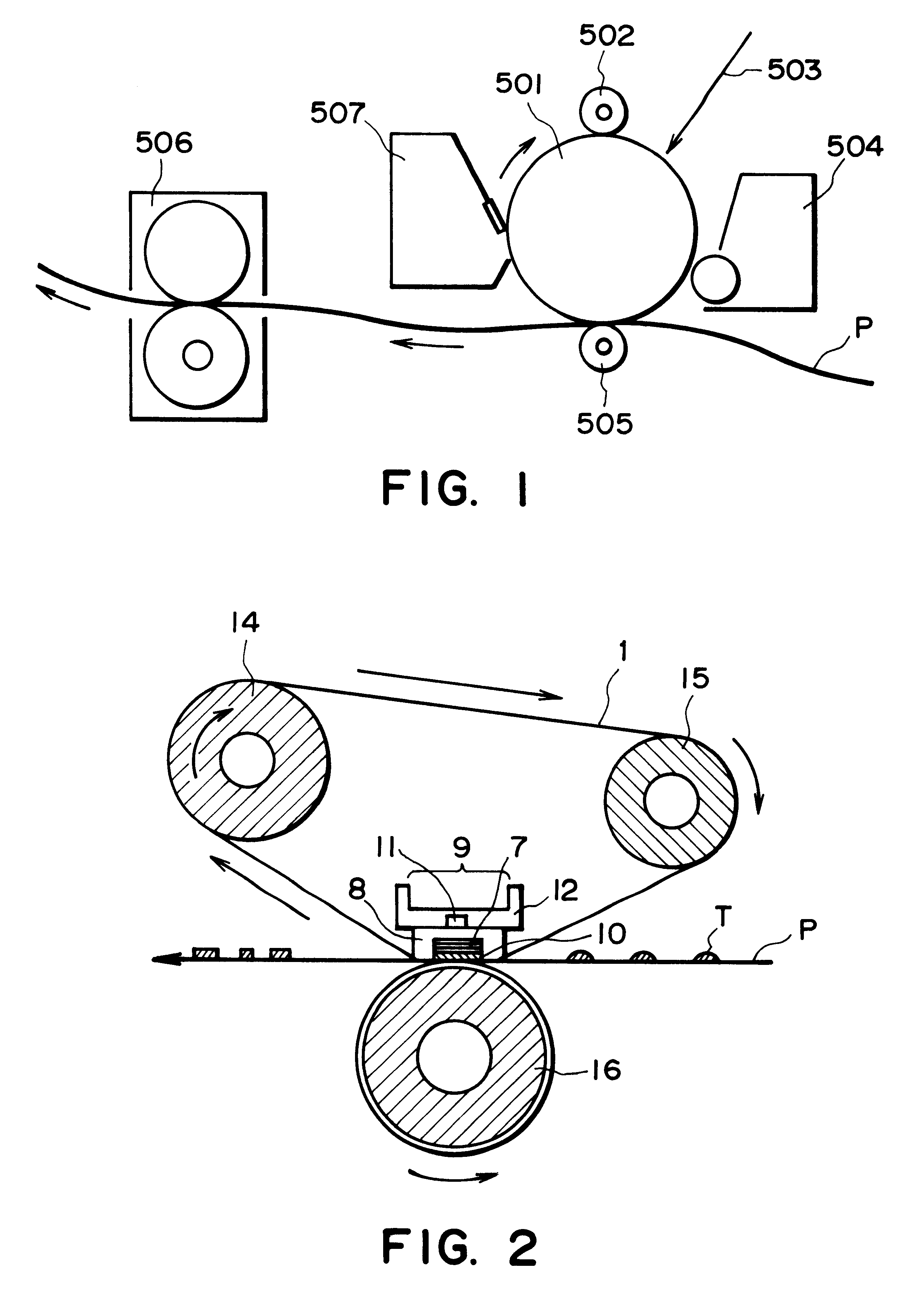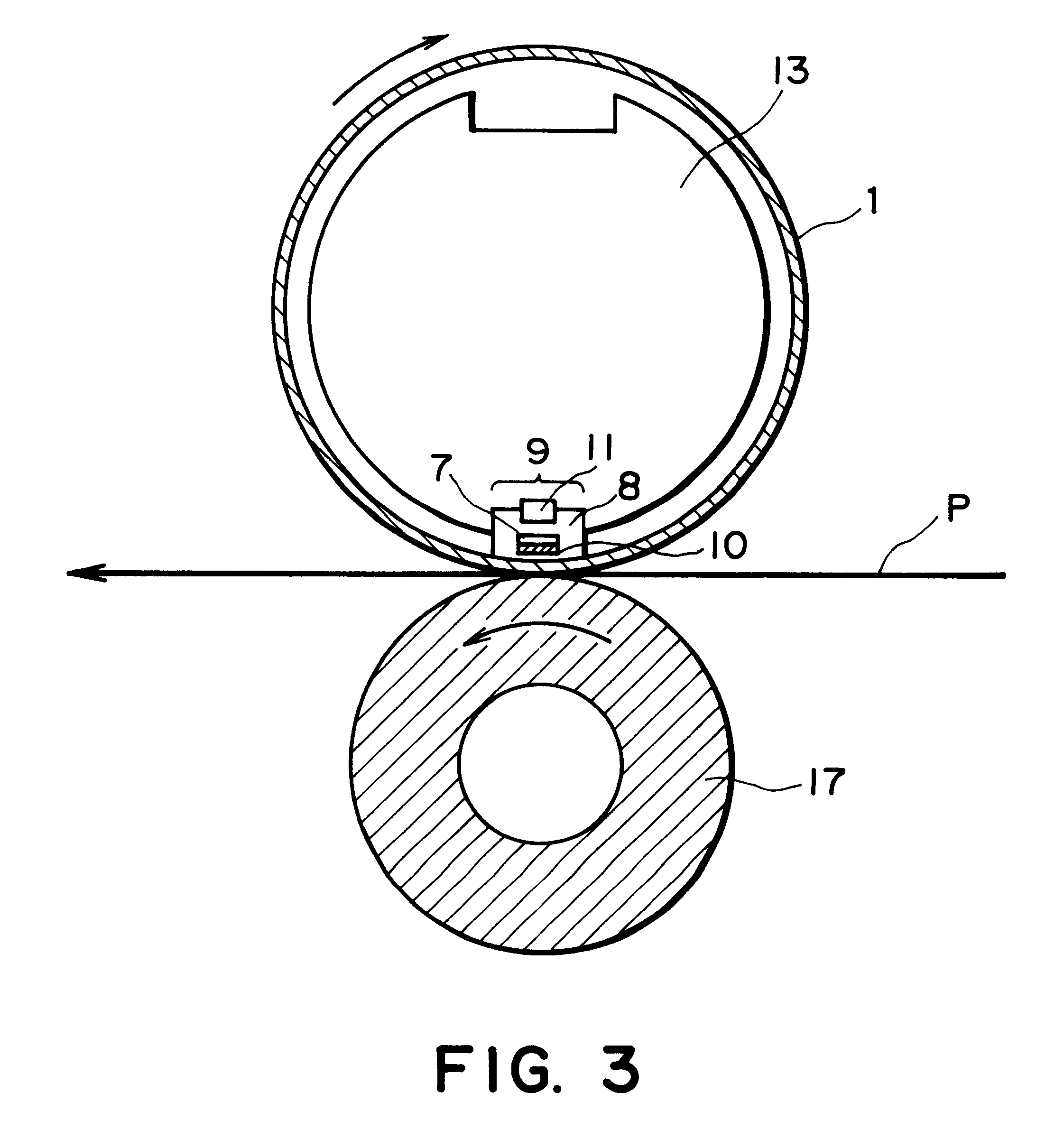Heating device, image forming apparatus including the device and induction heating member included in the device
a heating device and image forming technology, applied in the direction of electric/magnetic/electromagnetic heating, electrographic process, instruments, etc., can solve the problems of image aberration or blurring, long time required to raise the roller surface temperature up to fixing, image irregularities,
- Summary
- Abstract
- Description
- Claims
- Application Information
AI Technical Summary
Benefits of technology
Problems solved by technology
Method used
Image
Examples
example 2
A heating-resistant film 30 adopted in this embodiment has an organization as illustrated in the schematic sectional view of FIG. 5. Referring to FIG. 5, the heat-resistant film according to this embodiment includes an elastic layer 31 which contains fluorine resin particles 20 and heat-conductive filler particles 19 (similar to the elastic layer 1-2 in the embodiment of FIG. 4) and further contains electroconductive filler particles 32, such as carbon, so as to obviate image failure due to electrostatic offset liable to be caused by charging of the film. The electroconductive filler particles 32 may preferably have a volume resistivity of at most 500 ohm.multidot.cm. The values of volume resistivity referred to herein are based on values measured by placing 10 g of an electroconductive filler sample within a 100 mm-long cylinder having an inner surface coated with polytetrafluoroethylene to have an inner diameter of 25 mm and between an upper electrode and a lower electrode in the ...
example 3
As shown in Example 2 mentioned above, it becomes possible to obviate image failure due to electrostatic offset caused by charging of the film by further incorporating an electroconductive filler in an elastic layer 31 as shown in FIG. 5. In the case of incorporating carbon for preventing the charging of the film, however, a large amount of carbon has to be incorporated in order to provide a sufficiently low-resistivity. This, however, results in increased hardness of the elastic layer, so that the resistivity of the elastic layer cannot be sufficiently lowered by the inclusion of carbon alone. Accordingly, in this embodiment, an electroconductive filler 32 of FIG. 5 is provided as whisker or short fiber of K.sub.2 O.nTiO.sub.2 (potassium titanate), 9Al.sub.2 O.sub.3.2B.sub.2 O.sub.3 (aluminum borate), Si.sub.3 N.sub.4, SiC, alumina or glass, or metal whisker or graphite short fiber. The inclusion of such an electroconductive filler can lower the resistivity of the elastic layer at ...
example 4
In the embodiment of Example 1 above, the elastic layer 1-2 of FIG. 4 was prepared by dispersing, in the fluorine rubber, particles 20 of fluorine resin, such as PFA, PTFE or FEP, and further particles 19 of a heat-conductive material, such as silicon carbide (SiC), silicon nitride (Si.sub.3 N.sub.4), boron nitride (BN), aluminum nitride (AlN), alumina (Al.sub.2 O.sub.3), Ni, Fe or Al. In this embodiment, these heat-conductive particles are included in the elastic layer after being made electroconductive by metal deposition thereon. As a result, the heat-conductive particles can also function as electroconductive particles whereby the resistivity of the elastic layer can be effectively lowered without using additional electroconductive particles, thus at a lower total filler content and at a lower elastic layer hardness.
PUM
 Login to View More
Login to View More Abstract
Description
Claims
Application Information
 Login to View More
Login to View More - R&D
- Intellectual Property
- Life Sciences
- Materials
- Tech Scout
- Unparalleled Data Quality
- Higher Quality Content
- 60% Fewer Hallucinations
Browse by: Latest US Patents, China's latest patents, Technical Efficacy Thesaurus, Application Domain, Technology Topic, Popular Technical Reports.
© 2025 PatSnap. All rights reserved.Legal|Privacy policy|Modern Slavery Act Transparency Statement|Sitemap|About US| Contact US: help@patsnap.com



